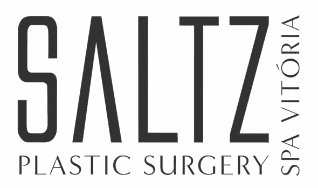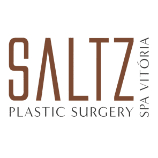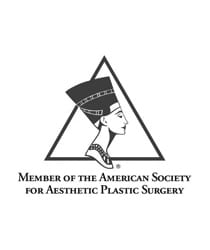
- Mark L. Jewell, MD
- Renato Saltz, MD
Dr. Jewell is Assistant Clinical Professor of Plastic Surgery, Oregon Health Sciences University, Portland, Oregon, and a past president of the American Society for Aesthetic Plastic Surgery
Dr. Saltz is a plastic surgeon in private practice in Salt Lake City, Utah, and a past president of the American Society for Aesthetic Plastic Surgery
Throughout our specialty—at meetings, in our journals, and in our clinics—patient safetyhas become not only a buzzword but an important focus for plastic surgeons. The cover of this month’s Aesthetic Surgery Journal bears a banner reminding us that 2011 marks the 10th anniversary of the first dedicated instructional course in patient safety at the American Society for Aesthetic Plastic Surgery’s annual meeting in New York City. While advances have been made in the interim that have given both plastic surgeons and patients comfort in safer, better outcomes, there still is a lot more work required. It is those opportunities for continued improvement that are the focus of this editorial, in which we celebrate how far we have come as a specialty and highlight how far we have yet to go. The advantages of patient safety as a part of overall operational excellence go far beyond the maxim of “do no harm”; continued and increased attention to patient safety will benefit our specialty through improved patient outcomes and economic sustainability in an ever-changing environment. There really is a compelling reason to do more and do better than what is being accomplished currently.
I (Dr. Jewell) had the pleasure of training under a very gifted professor of pediatric surgery—Dr. Lucian Leape, who went on to coauthor the landmark books To Err Is Human: Building a Safer Health System (1999) and Crossing the Quality Chasm: A New Health System for the 21st Century (2001). Dr. Leape has often said that, according to statistics, care within hospital venues remains about as safe as jumping from a high cliff with a parachute. The purported 1:1000 risk of a serious adverse healthcare event is high, in stark contrast to the safety and quality statistics in other industries, such as aviation. In 2010, there were no reported passenger deaths due to accidents in commercial aviation—a remarkable achievement. On the other hand, a patient catastrophe involving aesthetic plastic surgery anywhere in the world is newsworthy and immediately picked up by media outlets; such “bad news” significantly erodes the public trust.
Despite a variety of approaches designed to make healthcare safer (eg, electronic medical records, surgical time-outs, and targeted institutional initiatives for hand washing), there exists a performance gap between what happens every day and what is possible. Even though these methods are practiced universally, excellence has not been achieved according to a recent New England Journal of Medicine article describing minimal improvement in patient safety within hospitals.1 Impeccable quality and safety are within our grasp in the work that we perform, and achieving this will bring increased safety, economic benefit, and a competitive edge.
The rationale to “do better” is not a defensive mechanism to avoid professional liability; rather, it is a call to optimize quality and safety in our work and to differentiate ourselves from lesser-trained nonspecialists. While financial incentives for improved performance have been proposed as part of the Affordable Care Act’s accountable care organizations, the idea that initiatives within healthcare reform will have substantive impact on improving safety simply because of a preoccupation with cost is dubious. Besides, incentive payments may become lost in the “institutional overhead.” Gratuitous incentives, crushing bureaucracy, and reimbursement at a rate below Medicare level will prove to be poor motivators for improving safety measures and outcomes.
However, there actually is a relationship among quality, safety, and profit when operational effectiveness is present. Patients can trust that they will achieve the desired outcome with the lowest possible risk of adverse events. Surgeons can trust that they will deliver superior outcomes with the lowest risk of reoperation and with great efficiency. Staff can trust that they are working to provide excellent care without compromise. For all involved, there is the need for leadership—not necessarily more bureaucracy or technology—at all levels. Operational effectiveness can become a powerful competitive factor in the delivery of plastic surgery.
Rather than relying on government regulations or incentives, we have other options: There exists a basic science of system engineering and process design/management, the application of which leads to exceptional outcomes and safe care. While it is unfortunate that this system is not part of resident plastic surgery training, it is even more unfortunate that it has been completely ignored as a part of the Maintenance of Certification by the American Board of Plastic Surgery. Although it is possible within the Maintenance of Certification program to compare one’s performance to outcome benchmarks, training on how to engineer systems or develop processes to exceed benchmark values is lacking.
Some surgeons have discovered on their own that they can achieve excellence through exercising leadership, teaching, and data studies to construct approaches that deliver value, reliability, and efficiency.5 These innovators hold a cost and quality advantage over competitors who must work in situations where low performance is the norm. Effective systems solutions involve thorough, comprehensive processes that help staff produce exceptional outcomes under a variety of scenarios, including institution-based care. The processes (and the staff people who follow them) must remain dynamic so that challenging situations never considered to be patient safety related can be addressed; in plastic surgery, this means, for example, safely managing sleep apnea in a massive weight loss patient undergoing body contouring surgery.
In most institutions, there is no single person who oversees operational systems in every department and has the authority to make change. Staff largely follow directives yet have little latitude to experiment with ways to improve quality or efficiency. Physicians who are employed in hospital-based scenarios have largely become powerless shift workers. Oftentimes, good individuals become trapped in a tar pit of bureaucracy, within a system that only responds to catastrophes instead of creating opportunities. That being said, there are ample opportunities to achieve operational excellence in out-of-hospital facilities, where most plastic surgeons are employed. Ideally, processes in clinics and surgery units should reinforce one another, with an identical set of shared values and standards.
There is much in terms of process design and management that can be borrowed from other industries. Prior publications have introduced the idea of viewing the healthcare industry according to manufacturing concepts, where each step in the process is a moving part and all steps must function in sync to produce the desired outcome. Specifically, the Toyota Production System and Lean Manufacturing processes have a framework that is applicable to healthcare.2,6 Some essential items already exist in plastic surgery associations, such as libraries of informed consent documents, an overview of the cycle of care, and a process-oriented workbook for injectables. However, Toyota Production System–like planning templates and checklists can be powerful tools to assist with decision-making before surgery. By being able to articulate a plan, staff can more easily perform the requisite work for treatment and aftercare. If adverse events occur, processes for their management are already in place, along with trained staff to address them. The concept of Crew Resource Management (CRM) in the aviation industry has been shown to be an effective way to manage emergency situations.
Given these concepts, we recommend that physicians, in designing improved-care approaches, consider separating the process into discrete steps, to examine what is required and what could go wrong. Furthermore, when events produce a superior outcome, physicians need to take time to reflect on what went right. Usually, it is not luck; rather, it is the right people doing the right things, in the right time and sequence, with deliberate management of the interactions and interdependencies among the parts. We have found that personal involvement in the design and operation of these processes will produce better outcomes, rather than relying on processes designed by outsiders, which may be a poor fit with how plastic surgeons think and work. Checklists and algorithms that surgeons and staff devise, implement, and own are an accountable way to reduce waste and prevent omissions.7
Data are an essential part of outcomes measurement, which helps physicians complete the patient safety cycle, but submission remains problematic with regard to an increasing burden of time and cost. There are many organizations seeking data from plastic surgeons, each with a slightly different bent. Data have been collected for years via Tracking Operations and Outcomes for Plastic Surgeons, the American Association for Accreditation of Ambulatory Surgery Facilities (AAAASF), CosmetAssure, and the American Board of Plastic Surgery; yet, such data exist within silos. It takes great effort to examine data and cross-validate reported outcomes, as Alderman did for breast augmentation and abdominoplasty.8 Despite the difficulties, we must have more ongoing articles that report safety and outcomes, along with actionable steps to deliver improved outcomes and safer care. Accrediting agencies such as the AAAASF have a unique opportunity to move beyond the business of inspections and offer meaningful instructional courses on how to develop and maintain processes for improving patient safety and quality while managing cost. The focused data collected from millions of surgical cases at AAAASF-accredited facilities can be studied to demonstrate a level of safety that is as good as or better than institutional care.
In the end, our improvements must be inspired and supported by strong data and analytics. “Good” can be made better, and “safe” can be made safer, only by the collective innovation of everyone involved. We believe that when powered by additional training for physicians and other healthcare staff in process development/management and application of data-based metrics, these improvements will not be difficult for most plastic surgeons, given their innate ability to innovate. We have a unique opportunity to improve patient safety as an integral part of delivering operational effectiveness in plastic surgery, but it is time that we learn more about systems engineering and process development/management. We cannot afford to keep hoping for better without a process to take us there.
